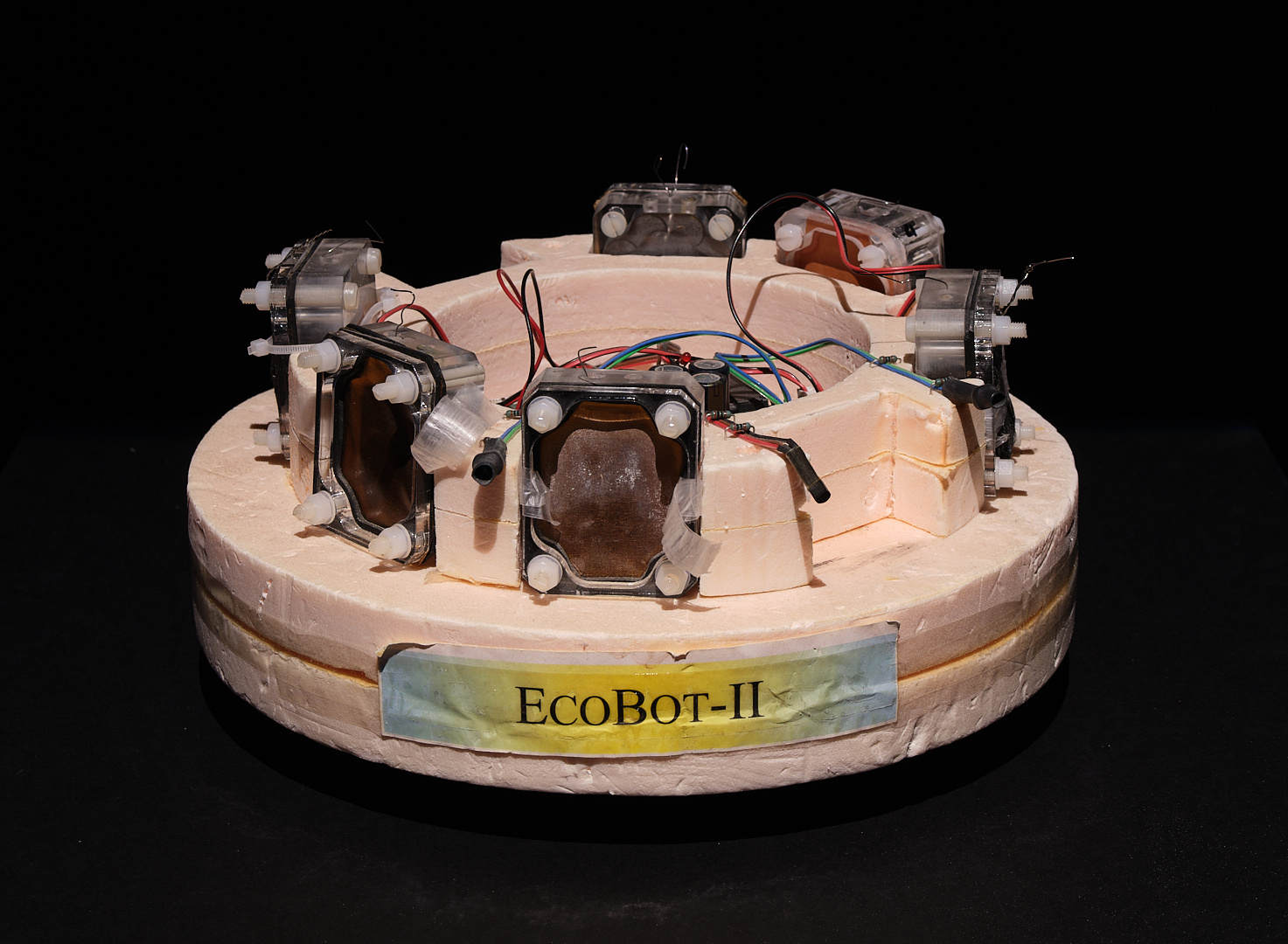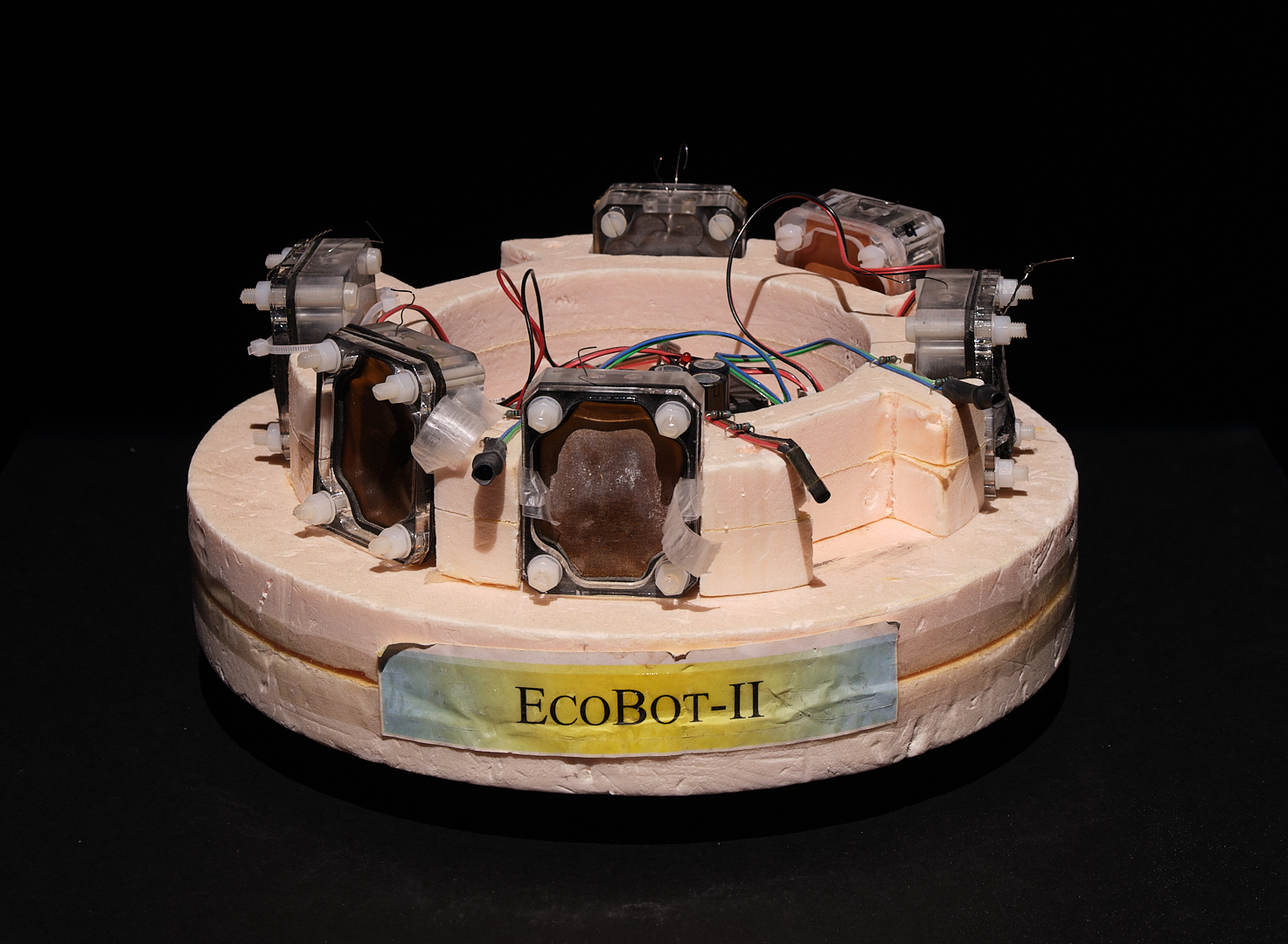EcoBot I, (2002); EcoBot-II, (2005)
- Title
- EcoBot I, (2002); EcoBot-II, (2005)
»EcoBot I« and »II« are early examples of the microbial fuel cell technology used in »ALICE«, developed by Ioannis Ieropoulos and Bristol Robotics Laboratory.
»EcoBot I« (2002) is an innovative and functional prototype of an autonomous robot powered by microbes feeding on sugar. It is a 960g lightweight robot powered solely by microbial fuel cells (MFCs) and exhibits phototactic (light seeking) behaviour. The robot has a small capacitor bank that enables alternating charge/discharge (or activate/sleep) behaviour, just like animals, and does not require any other form of energy source such as batteries or solar cells.
»EcoBot-II« (2005) is the world's first robot powered by unrefined biomass (e.g., food scraps, grass clippings and dead insects) to sense its environment, process information, communicate, and follow the light. Microbial fuel cells (MFCs), which contain bacterial cultures from sewage sludge and use oxygen from the air for oxidation at the cathode, serve as the energy source. The robot is a scavenger that consumes dead flies, rotten fruit, grass clippings, and crustacean shells, to exhibit four different behaviours as a rudimentary form of artificial symbiosis – made possible by the fertile combination of live microbial cultures and artificial mechatronic elements.
Development: Ioannis Ieropoulos, John Greenman, Ian Horsfield, Chris Melhuish (Bristol Robotics Lab at the University of Western England).

